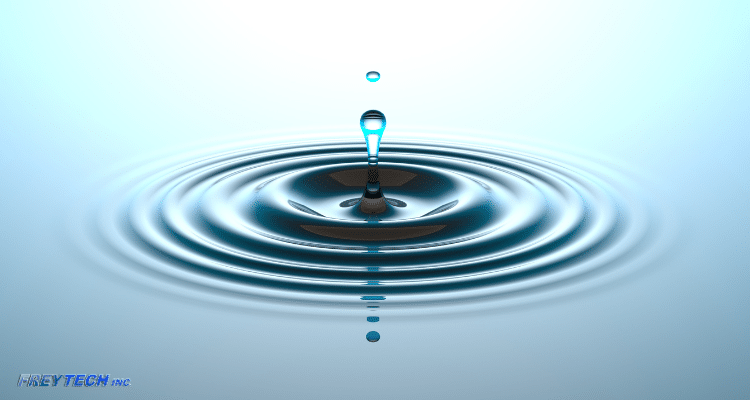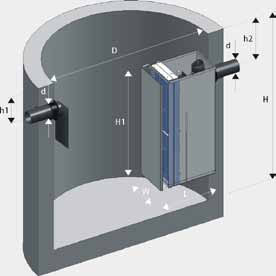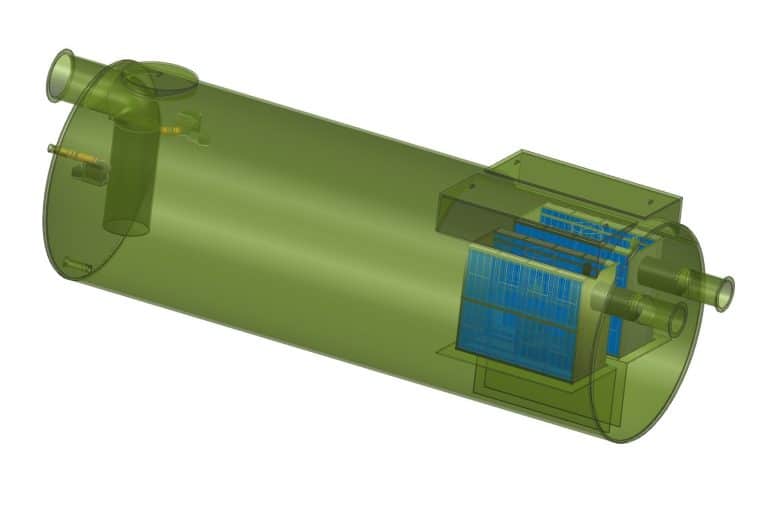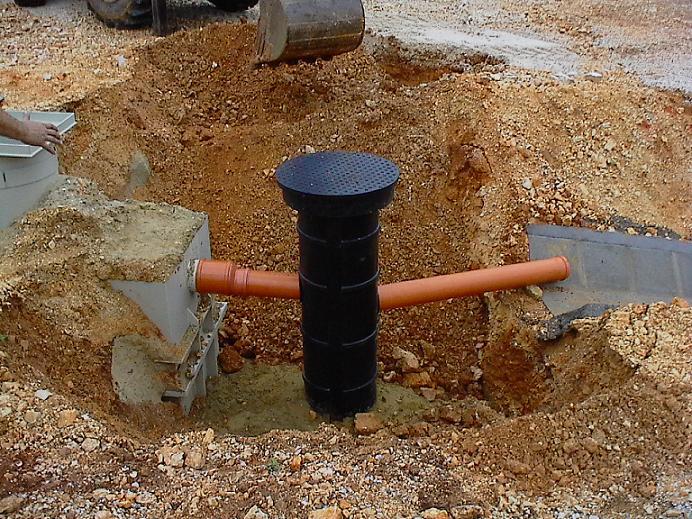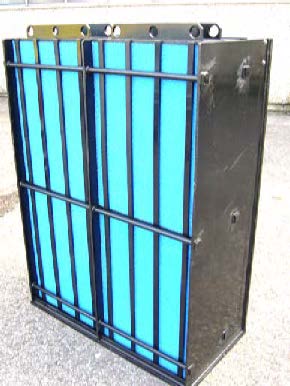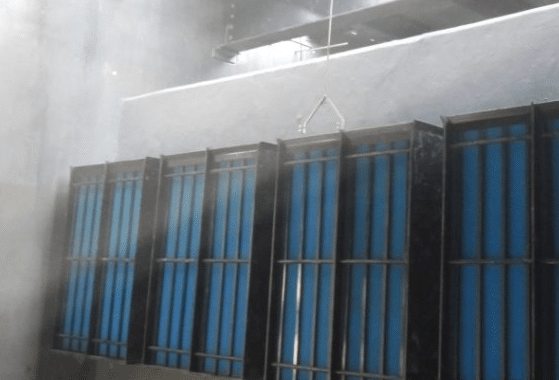With stricter environmental rules and a push for green practices, are old oil water separation methods enough today?
This guide explores the complex world of advanced oil water separation systems. It highlights the key technologies from companies like Freytech Inc. As industries grow, so does the need for better oil and water separation. This is not just for following rules, but for better environmental care and work efficiency. Let’s dive into why oil-water separators matter, the laws guiding their use, and the latest solutions for cleaner water treatment.
Key Takeaways
- Advanced oil-water separation systems can significantly enhance environmental compliance.
- Freytech’s technologies can achieve separation efficiencies as low as 0.1 PPM.
- Proper oil-water separation can reduce operational costs by up to 30% in related industries.
- Innovative techniques like coalescence-filtration enhance oil removal efficiency by approximately 90%.
- Regular maintenance can lower emergency repair costs by up to 50%.
Introduction to Oil Water Separation Systems
An oil water separator is a device that removes oil, grease, and hydrocarbons from water. It’s key for managing wastewater and following environmental rules. It helps industries avoid damage and boosts efficiency by keeping water clean.
What is an Oil Water Separator?
Oil water separators use different methods to remove oil from water. There are gravity-based and coalescing plate separators. Gravity-based ones are simple but struggle with small oil droplets. Coalescing plate separators, on the other hand, can remove up to 95% of oil, making them vital for cleaning up spills.
Importance of Effective Separation
Using an oil-water separator is essential for keeping operations running smoothly and following the law. Not removing contaminants can cost a lot, with fines from $1,000 to $10,000. Keeping the system in good shape can also save 20-30% in downtime and costs, showing the value of good management.
Applications in Various Industries
Oil-water separators are used in many fields, like oil and gas, manufacturing, and food processing. They’re important for treating industrial water. Each industry faces different challenges in dealing with oil, but advanced technologies help solve these problems. This way, facilities can clean up their water and be more sustainable.
Understanding Hydrocarbon Discharge Limits
The rules for hydrocarbon discharge in North America are key to protecting our water. They set limits on how much oil can be in water discharged into the environment. These rules help industries act responsibly and follow environmental laws.
Overview of North American Regulations
Looking into these rules, we see specific limits on oil in water discharge. For example, many industries must keep oil levels under 15 parts per million (PPM). In some areas, like the Gulf of Mexico, the goal is even lower, under 10 PPM. This strict monitoring encourages companies to be accountable and protect our water.
The 10 Parts per Million Standard
The 10 PPM standard is a goal for many companies to reduce their environmental impact. By meeting this standard, companies not only follow the law but also help the planet. They use advanced technology to keep oil out of water, meeting the 10 PPM goal.
The Benefits of Exceeding Discharge Standards
Going beyond the hydrocarbon discharge limits has many benefits for businesses. Companies that beat the 10 PPM mark are seen as eco-friendly. This can lead to better public image and fewer fines for not following rules. It shows a company’s dedication to being green and can help them stand out in the market.
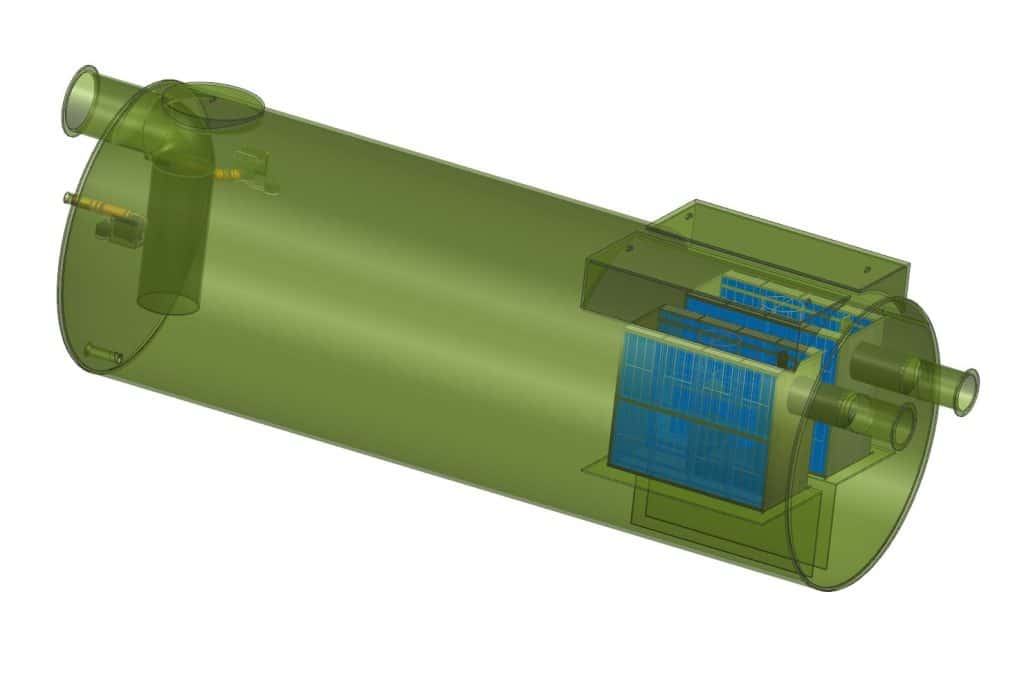
Freytech Inc.’s Enhanced Coalescing Technology
Freytech Inc. is a leader in oil-water separation, using advanced coalescing technology. This method makes oil droplets bigger, improving how well they are removed. This leads to cleaner water, helping companies follow environmental rules.
How Coalescing Works
The coalescing process uses special media to merge tiny oil droplets. It separates oil from water, even when the oil is very light. Freytech’s systems can remove oil down to 0.1 PPM, starting from 2000 PPM, which is very important for wastewater treatment.
Advantages of Enhanced Coalescing
Enhanced coalescing technology has many benefits. It makes oil water separation more efficient. It also helps companies meet strict water discharge limits, like those set by the CAN/ULC-S656 standard.
Freytech’s separators do better than old methods, achieving separation below 5 PPM. This is great for companies trying to follow the US EPA’s Clean Water Act.
Comparing Traditional vs. Enhanced Methodologies
Old methods struggle with emulsified oils, leading to poor separation and more oil left behind. Enhanced coalescing technology uses special designs to catch oil droplets better. This makes Freytech’s systems perfect for stormwater management and industrial waste.
Achieving 5 PPM Separation Efficiency
Understanding the science behind 5 PPM separation is key for effective oil water separation systems. These systems use gravity and coalescence to lower oil levels. This meets strict environmental standards. Coalescing plate separators can make effluent quality under 5 mg/L of light liquids, showing modern tech’s power in improving wastewater treatment.
The Science Behind 5 PPM Separation
To hit a 5 PPM separation, temperature and droplet size matter a lot. Warmer oil-water mixtures mean less oil viscosity, better separation. For example, bilge water works best at +55°C. With the right tank sizes, operators can make separation even better.
Case Studies of Successful Implementation
Many success stories show how advanced separation tech works. Industries using Freytech’s systems meet discharge limits of 0-5 ppm for treated bilge water. This shows real benefits in caring for the environment and following rules. It proves investing in good separation systems boosts work efficiency.
Customer Testimonials
Customers love Freytech’s oil water separation systems. They’re happy with better wastewater management. These systems don’t just improve separation; they also help the environment. This makes adopting proven tech very important.
The Capacity to Achieve 0.1 PPM Separation
Freytech’s advanced systems can separate oil from water at a 0.1 PPM level. This is a big step forward in oil water separation. It makes water cleaner and meets strict environmental standards.
Benefits of Trace Oil Separation
Being able to separate oil at 0.1 PPM brings many benefits. It helps industries meet U.S. Environmental Protection Agency standards. This means cleaner water and better environmental protection.
Companies that use these systems are seen as leaders. They help the environment while doing business.
Technologies Enabling Low PPM Results
Advanced tech is key to getting low PPM results. Microfiltration membranes are used to filter out big particles. This is important for treating wastewater from industries.
Trace oil separation technology, like 2D graphene oxide membranes, works very well. It can separate oil over 99% efficiently. This makes Freytech a top choice for solving oily wastewater problems.
Real-World Performance Metrics
Freytech’s systems have shown great results in real-world tests. They work well with oily wastewater from oil and gas. Case studies show they can handle different situations.
To learn more, visit Freytech’s oil water separators. These results prove Freytech’s systems are effective and sustainable.
Versatility: What Can Freytech Separators Remove?
Freytech’s oil-water separators are very good at separating oil from water. They can handle different types of hydrocarbons in many industries. This is thanks to their advanced technology, which makes sure they meet strict environmental rules.
Types of Hydrocarbons Managed
Freytech separators can handle many kinds of hydrocarbons. The type of hydrocarbon in wastewater depends on the environment. These systems can remove free oils to less than 5 PPM and emulsified oils to 0.1 PPM. This makes them key for industries that process fluids.
Special Features for Different Oil Types
Freytech separators have special features for different oils. These features help them work well in different situations. For example, some systems in British Columbia can handle oils with specific gravities between 0.82 and 0.88.
The EcoLine B series can handle up to 50 GPM. This shows how flexible this technology is.
Environmental Impact Considerations
Good oil separation is key to reducing environmental pollution. Advanced separators help keep stormwater clean. This protects our water resources.
By keeping oil levels low, companies avoid big fines and keep their good name. This focus on clean water meets rules and shows care for the environment in many fields.
The Reusable Nature of Coalescing Media
Reusable coalescing media plays a big role in oil-water separation systems. It’s made to last, making oil separation cheaper and less often needed. As companies deal with more rules and costs, using this media is key to keeping systems running well.
Longevity and Cost-Effectiveness
Reusable coalescing media can be used many times, saving money in the long run. It lasts much longer than disposable options, cutting down on costs. This lets companies save money and use it for other important things.
Maintenance and Performance Optimization
Keeping separation systems in top shape is important. This means regular cleaning and checks on the media. Doing this keeps the media working well and the system running smoothly.
Environmental Benefits of Reusability
Using reusable coalescing media is good for the planet. It cuts down on waste from single-use products. This shows companies care about the environment and follow strict rules.
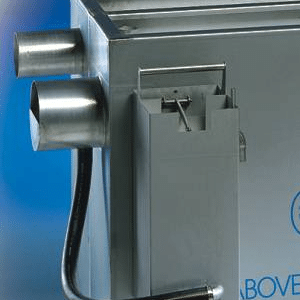
The Optional Patented Oil Skimmer
The patented oil skimmer is a new part of Freytech’s oil skimming system. It makes separating oil from water more efficient. This device floats on the water’s surface and collects oil, then moves it to a separate container.
This keeps the oil skimming going without stopping. It’s a key part of keeping the system running smoothly.
How the Skimmer Works
The oil skimmer uses advanced technology to separate oil from water. It has a special chamber with a lot of surface area. This design helps remove almost all oil droplets over 20 microns.
It also keeps oils from mixing back with water. This ensures the oil is removed effectively.
Mechanisms for Automatic Draining
The system has automatic draining to remove oil continuously. This makes it easier for operators to keep the system running well. The coalescing media helps settle dirt and sludge, improving efficiency.
Purity and Efficiency of Skimmed Oil
The oil skimmer makes the skimmed oil very pure, up to 99.7% without water. This high purity makes the oil great for recycling. Adding the patented oil skimmer to operations can make oil separation better and cheaper.
The Value of Efficiently Skimmed Used Oil
Efficiently skimming used oil turns it into a valuable resource in the industrial world. It’s not just waste anymore. Recycling used oil helps recover important resources for different uses. This process is good for the environment and shows the real value of oil.
Why Used Oil is a Valuable Commodity
Recovered used oil can be made into new lubricants, fuels, or materials. By recycling, companies help create a circular economy. This makes recycling profitable, not just a chore. It shows how important it is for industries to use effective oil skimming methods.
Recycling Processes for Skimmed Oil
There are many ways to recycle skimmed oil, like advanced filtration and chemical treatments. Using modern technologies, like IoT sensors in oil skimming systems, helps follow rules and save oil. This way, industries can cut down on waste and work more efficiently.
Economic Benefits of Oil Recycling
Recycling oil brings big economic gains, like saving on disposal costs and avoiding fines. The cost of skimming equipment is paid back over time through savings and selling oil. This shows how important sustainable practices are for a company’s success.
Installation and Maintenance of Freytech Systems
Installing and maintaining Freytech’s oil water separators right is key. It makes sure they work well and follow local rules. Knowing how to set them up helps them fit smoothly into different places.
Steps for Seamless Installation
Installing oil water separators takes a few important steps. First, you need to check the site to find the best spot and setup. Then, you measure the flow and types of oil to pick the right system.
After it’s in, you test it to make sure it meets standards. This includes keeping the water clean of oil, below 10 PPM.
Routine Maintenance Best Practices
Keeping up with maintenance is important for the systems’ long-term health. You should clean the oil-catching media often. This keeps it working well.
Also, regular checks help spot problems early. This way, you can fix them before they cause big issues.
Troubleshooting Common Issues
Knowing how to fix common problems is a big help. Issues like oil buildup can be due to a clogged filter or a wrong setup. With the right info, you can fix these fast. This keeps things running smoothly and meets environmental rules.
Customer Support and Consultation Services
Freytech Inc. puts customer satisfaction first by providing top-notch support for oil water separation. They help businesses find the best oil-water separator for their needs. With advanced tech and expert advice, they ensure high separation efficiency, beating industry standards.
Expert Guidance for System Selection
Choosing the right system can be tough, with many models to pick from. The OWS above ground and OWS below ground are two examples, each with different sizes and flow rates.
Freytech guides clients through these choices. They help pick a separator that fits their flow rates and needs.
Technical Support Options
Freytech Inc. also offers technical help for separation systems. They provide maintenance tips and troubleshooting advice. This helps keep operations smooth and reduces downtime.
By cutting down on downtime, businesses can save a lot on costs. Freytech’s technical support makes operations more efficient.
Customization for Unique Needs
Freytech knows every operation is different. They offer custom solutions to meet unique needs. This ensures systems work well under various environmental rules.
By tailoring solutions, businesses can save on water treatment and disposal costs. Freytech helps clients follow water quality standards while saving money.
Contact Freytech Inc. for Your OWS Needs
Looking for help with oil water separation systems? Freytech Inc. is here for you. Our team is ready to help with any questions you have. We’ll guide you to the right solutions for your business.
Get in Touch with Us
Need help right away? Call us at +1 (305) 372-1104. Our team is ready to talk about coalescing technologies or your oil separation needs. We’ll find the best solution for your business.
Our Commitment to Environmental Purity
At Freytech Inc., we care about the environment. Our oil separation processes improve wastewater treatment and support green practices. By choosing us, you’re supporting environmental responsibility and efficient operations.


